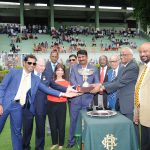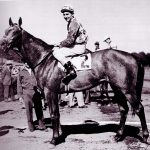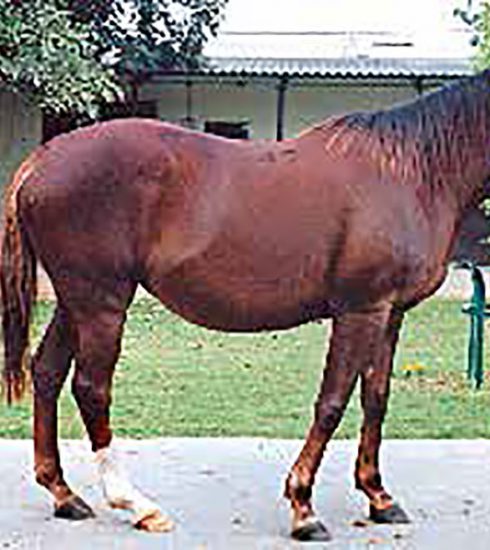MEMORABLE Dead-Heats
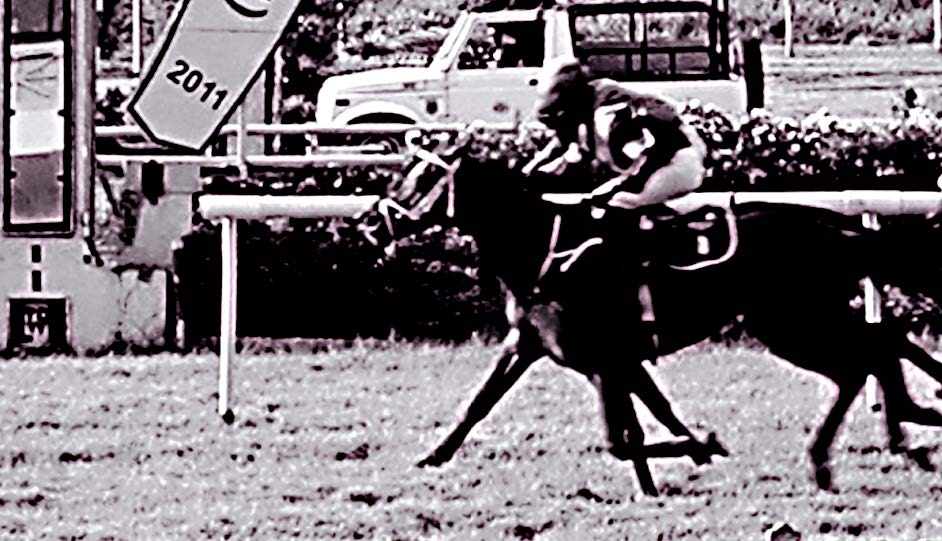 Few — if any — of people present at the Calcutta racecourse on Saturday, 26 February 2011 to witness Fleet Indian winning the Queen Elizabeth II Cup, gr.3 would have been aware of the occasion. It was the 150th running of what was once described as the “most Famous Race East of Suez”. It was first run in 1856/57 — when it was won by the Arab horse Nero — as the Governor-General’s Plate. Then, there was a hiatus of five years during the tenure of Lord Lawrence, for the Viceroy was opposed to racing. It was revived after Lord mayo, a friend of the turf, took over from Lord Lawrence. the new Viceroy donated a trophy and the first Viceroy’s Cup was run on 24 December 1969. From that year till 1946, the Viceroy’s Cup was the Blue Riband of racing, the highlight of the turf during The Raj.
Few — if any — of people present at the Calcutta racecourse on Saturday, 26 February 2011 to witness Fleet Indian winning the Queen Elizabeth II Cup, gr.3 would have been aware of the occasion. It was the 150th running of what was once described as the “most Famous Race East of Suez”. It was first run in 1856/57 — when it was won by the Arab horse Nero — as the Governor-General’s Plate. Then, there was a hiatus of five years during the tenure of Lord Lawrence, for the Viceroy was opposed to racing. It was revived after Lord mayo, a friend of the turf, took over from Lord Lawrence. the new Viceroy donated a trophy and the first Viceroy’s Cup was run on 24 December 1969. From that year till 1946, the Viceroy’s Cup was the Blue Riband of racing, the highlight of the turf during The Raj.
After India became independent in 1947, the race was run for three years as the governor-general’s Cup, twice as King George V Cup and then, from 1953 it has become the Queen Elizabeth II Cup.
This race, which was instituted before the Melbourne Cup, has a rich history, steeped in lore and legend. In 1876, when the grand Delhi Durbar to commemorate the proclamation of Queen Victoria as ‘empress of India’ was held, the festivities also included racing. The Delhi meeting affected the regular Calcutta racing and that year a prince of Wales’s Cup was run as a substitute for the Viceroy’s Cup. the race resulted in a dead-heat between satellite and Lord Clifden. as was the norm in those days, the dead-heat was “run-off’ and satellite won.
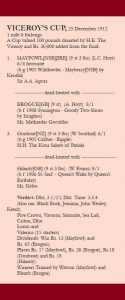 It was to be another 36 years before there was a Deadheat in the Viceroy’s Cup. the 1912 renewal was awaited with great expectations. sir A.A. Apcar’s Irish-born half-bred gelding Mayfowl had won the race in the two previous years and was bidding to become the first horse to win it in three consecutive years. With eight Viceroy’s Cups already adorning his mantlepiece sir apcar, the long serving Calcutta steward, had a virtual stranglehold on the race, his last six wins coming in a span of eleven years. It was to australia that sir apcar usually turned in his quest for potential Cup winners and he was known to pay a hefty price for the right horse. mayfowl, however, had been imported from Ireland at a bargain basement outlay of 400 pounds. Bred by Mr. R.F. Gannon, 49 pounds was all that Mr. J.J. Parkinson paid to secure him from his breeder. mayfowl not only traced to obscure origins but one of the sires — spartacus — along his tail-female line was also a half-bred, making his pedigree twice flawed. However, by the time Mayfowl was born in 1905, Clorane, out of a half-sister to mayfowl’s grandam, had turned out to be a smart runner. Clorane apart, the principal claim to fame for the family was Come away, a winner of the grand National at aintree. a winner of seven races in Ireland, including two over hurdles, mayfowl was bought by sir apcar as essentially a jumping prospect. Indeed, in his first year Mayfowl won six of his 10 races including the burdwan Cup and grand Annual Handicap both over hurdles. He then bagged the burdwan Cup-Viceroy’s Cup double in 1910 and 1911, jockey L.C. Hoyt riding him over hurdles but passing him over for the Viceroy’s Cup where a. Kuhn was most grateful to get the winning rides. mayfowl was given two easy races in pune during the monsoon of 1912 and he showed himself to be in fine fettle when cruising into second place in the trial stakes over a mile, a distance too short for him. Four days later, mayfowl paraded with 14 other runners for the Viceroy’s Cup. This time, L.C. Hoyt, having learnt his lesson only too well, was in the saddle and the confidence that the betting fraternity had in the pair was reflected in short odds of 6/4 in such a big field which included two Sydney Cup winners in Vavasor and saxonite. a contemporary account of the race reads – “With a little delay, the 15 starters were let go to a beautifully level start and Vavasor on the rails was the first to show out. As they passed the post first time around, Vavasor was leading and others were spread across the track. then, before the Kidderpore corner was reached, Five Crown went on to make the running and he led from Hilarity and Sea Lad. At the 4f pole, Vavasor ran into Sea Lad, stumbled and threw his rider. sea Lad was thrown out of his stride and was never prominent again. entering the straight, mayfowl and gunboat held a slight advantage. mayfowl shook off gunboat but brogue came along with a rattle to engage him in a tussle which the Judge was unable to resolve.” While all eyes were rivetted on the front pair, another battle royal was holding the attention of place backers. gunboat and Hilarity, both winners of the Aga Khan’s Trophy at Pune in their time, were going neck and neck and the Judge could not separate these two as well resulting in another dead-heat. two dead-heats in the biggest race in the land ! thus did mayfowl register his Viceroy’s Cup hat-trick though he had to share the spoils with brogue. the following year, running in the colours of mr. r.r.s., he won his fourth Viceroy’s Cup, a feat which Finalist emulated 30 years later. Finalist won his four Cups outright. on the other hand, he was beaten a length by Baqlava in 1940. Mayfowl was never beaten in a Viceroy’s Cup. mayfowl has been described as being “easy going, of an amiable temparament, light fleshed, grand of bone and feet, a natural stayer with a perfect action who warmed up late in a race.” Jockey Hoyt maintained that once another horse came upsides, Mayfowl required no riding. He hated being beaten and he did everything he could to peg back the adversary. the proof of Hoyt’s assesment is that on two other occasions in his career mayfowl was involved in dead-heats, albeit for minor placings. both the instances occured in august plate over a mile at Pune. In 1911, the Judge declared a deadheat for the third place involving Mayfowl (L.C. Hoyt) and Huka (Barrett) while in 1913 Mayfowl (P. Brown) and Mr. goculdas’s bombastic (ruiz) were inseparable. If Mayfowl was a legend on the Indian Turf, the filly – brogue — with whom he dead-heated had legendary international connections. brogue was initially owned by Mr. J.C. Galstaun for whom she won the Macpherson Cup and the King-emperor’s Cup. mr. galstaun sold her later to mr. mathradas goculdas who, along with mr. r.r.s., the Chief of Kagal, had emerged as formidable Western India challengers to Calcutta’s dominance, sir apcar and mr. goculdas. It was a face-off between two heavy-weight owners. so it might have been but it was also an era of chivalry and sportsmanship. sir apcar insisted after the race that mr. goculdas keep the trophy ! after her racing days, brogue was sent back to england but proved disappointing as a broodmare in her short career at stud. a pity indeed because her simon square half-sister — simon’s shoes — has since established herself as a blue-hen of repute. simon’s shoes is the ancestress of countless good winners including sadler’s Wells, Nureyev, thatch, North Light and many others. there is one more interesting aside to this dead-heat. The jockeys involved, L.C. Hoyt on Mayfowl and Alf Hoyt aboard brogue were brothers. they were born in america but the family moved to australia when they were still in their shorts and settled in gippsland, east of melbourne. It was here that the young Hoyts learned to ride and very soon R. Hoyt, A. Hoyt and L.C. Hoyt began to figure on jockeys’ name boards. all three of them rode in India. early in the 20th century, two Hoyt brothers — A. and L.C. — followed in the footsteps of R. Hoyt and came to India. Alf Hoyt rode Mr. Galstaun’s Vasto — the only american-bred winner of the Viceroy’s Cup — to a victory in 1902. L.C. Hoyt, who was always known by his second name ‘Clarke’, was retained by the apcar stable and he did well for his patron winning three Indian grand Nationals (on badger, seclusion and mallard), four burdwan Cups (thrice with mayfowl and once with mallard) and a Cooch behar Cup on Five Crown. early in 1913, a fall from Wassail caused serious damage to his liver and he died in bombay on 13 april at the young age of 33. Four days later, sir a.a. apcar died in bangalore. Alf Hoyt was an equally capable jockey. Apart from his Viceroy’s Cups on Vasto and brogue, he won the trial stakes on soultline, governor’s Cup on matchlock and burdwan Cup on Picnic, twice on Politian. He rode principally for Mr. goculdas and on hanging his spurs he became a trainer to the textile tycoon. sir Victor sassoon’s star of Italy and his own Play On were two fine horses with whom he was associated and they were ridden by his son who was named after his brother Clarke.
It was to be another 36 years before there was a Deadheat in the Viceroy’s Cup. the 1912 renewal was awaited with great expectations. sir A.A. Apcar’s Irish-born half-bred gelding Mayfowl had won the race in the two previous years and was bidding to become the first horse to win it in three consecutive years. With eight Viceroy’s Cups already adorning his mantlepiece sir apcar, the long serving Calcutta steward, had a virtual stranglehold on the race, his last six wins coming in a span of eleven years. It was to australia that sir apcar usually turned in his quest for potential Cup winners and he was known to pay a hefty price for the right horse. mayfowl, however, had been imported from Ireland at a bargain basement outlay of 400 pounds. Bred by Mr. R.F. Gannon, 49 pounds was all that Mr. J.J. Parkinson paid to secure him from his breeder. mayfowl not only traced to obscure origins but one of the sires — spartacus — along his tail-female line was also a half-bred, making his pedigree twice flawed. However, by the time Mayfowl was born in 1905, Clorane, out of a half-sister to mayfowl’s grandam, had turned out to be a smart runner. Clorane apart, the principal claim to fame for the family was Come away, a winner of the grand National at aintree. a winner of seven races in Ireland, including two over hurdles, mayfowl was bought by sir apcar as essentially a jumping prospect. Indeed, in his first year Mayfowl won six of his 10 races including the burdwan Cup and grand Annual Handicap both over hurdles. He then bagged the burdwan Cup-Viceroy’s Cup double in 1910 and 1911, jockey L.C. Hoyt riding him over hurdles but passing him over for the Viceroy’s Cup where a. Kuhn was most grateful to get the winning rides. mayfowl was given two easy races in pune during the monsoon of 1912 and he showed himself to be in fine fettle when cruising into second place in the trial stakes over a mile, a distance too short for him. Four days later, mayfowl paraded with 14 other runners for the Viceroy’s Cup. This time, L.C. Hoyt, having learnt his lesson only too well, was in the saddle and the confidence that the betting fraternity had in the pair was reflected in short odds of 6/4 in such a big field which included two Sydney Cup winners in Vavasor and saxonite. a contemporary account of the race reads – “With a little delay, the 15 starters were let go to a beautifully level start and Vavasor on the rails was the first to show out. As they passed the post first time around, Vavasor was leading and others were spread across the track. then, before the Kidderpore corner was reached, Five Crown went on to make the running and he led from Hilarity and Sea Lad. At the 4f pole, Vavasor ran into Sea Lad, stumbled and threw his rider. sea Lad was thrown out of his stride and was never prominent again. entering the straight, mayfowl and gunboat held a slight advantage. mayfowl shook off gunboat but brogue came along with a rattle to engage him in a tussle which the Judge was unable to resolve.” While all eyes were rivetted on the front pair, another battle royal was holding the attention of place backers. gunboat and Hilarity, both winners of the Aga Khan’s Trophy at Pune in their time, were going neck and neck and the Judge could not separate these two as well resulting in another dead-heat. two dead-heats in the biggest race in the land ! thus did mayfowl register his Viceroy’s Cup hat-trick though he had to share the spoils with brogue. the following year, running in the colours of mr. r.r.s., he won his fourth Viceroy’s Cup, a feat which Finalist emulated 30 years later. Finalist won his four Cups outright. on the other hand, he was beaten a length by Baqlava in 1940. Mayfowl was never beaten in a Viceroy’s Cup. mayfowl has been described as being “easy going, of an amiable temparament, light fleshed, grand of bone and feet, a natural stayer with a perfect action who warmed up late in a race.” Jockey Hoyt maintained that once another horse came upsides, Mayfowl required no riding. He hated being beaten and he did everything he could to peg back the adversary. the proof of Hoyt’s assesment is that on two other occasions in his career mayfowl was involved in dead-heats, albeit for minor placings. both the instances occured in august plate over a mile at Pune. In 1911, the Judge declared a deadheat for the third place involving Mayfowl (L.C. Hoyt) and Huka (Barrett) while in 1913 Mayfowl (P. Brown) and Mr. goculdas’s bombastic (ruiz) were inseparable. If Mayfowl was a legend on the Indian Turf, the filly – brogue — with whom he dead-heated had legendary international connections. brogue was initially owned by Mr. J.C. Galstaun for whom she won the Macpherson Cup and the King-emperor’s Cup. mr. galstaun sold her later to mr. mathradas goculdas who, along with mr. r.r.s., the Chief of Kagal, had emerged as formidable Western India challengers to Calcutta’s dominance, sir apcar and mr. goculdas. It was a face-off between two heavy-weight owners. so it might have been but it was also an era of chivalry and sportsmanship. sir apcar insisted after the race that mr. goculdas keep the trophy ! after her racing days, brogue was sent back to england but proved disappointing as a broodmare in her short career at stud. a pity indeed because her simon square half-sister — simon’s shoes — has since established herself as a blue-hen of repute. simon’s shoes is the ancestress of countless good winners including sadler’s Wells, Nureyev, thatch, North Light and many others. there is one more interesting aside to this dead-heat. The jockeys involved, L.C. Hoyt on Mayfowl and Alf Hoyt aboard brogue were brothers. they were born in america but the family moved to australia when they were still in their shorts and settled in gippsland, east of melbourne. It was here that the young Hoyts learned to ride and very soon R. Hoyt, A. Hoyt and L.C. Hoyt began to figure on jockeys’ name boards. all three of them rode in India. early in the 20th century, two Hoyt brothers — A. and L.C. — followed in the footsteps of R. Hoyt and came to India. Alf Hoyt rode Mr. Galstaun’s Vasto — the only american-bred winner of the Viceroy’s Cup — to a victory in 1902. L.C. Hoyt, who was always known by his second name ‘Clarke’, was retained by the apcar stable and he did well for his patron winning three Indian grand Nationals (on badger, seclusion and mallard), four burdwan Cups (thrice with mayfowl and once with mallard) and a Cooch behar Cup on Five Crown. early in 1913, a fall from Wassail caused serious damage to his liver and he died in bombay on 13 april at the young age of 33. Four days later, sir a.a. apcar died in bangalore. Alf Hoyt was an equally capable jockey. Apart from his Viceroy’s Cups on Vasto and brogue, he won the trial stakes on soultline, governor’s Cup on matchlock and burdwan Cup on Picnic, twice on Politian. He rode principally for Mr. goculdas and on hanging his spurs he became a trainer to the textile tycoon. sir Victor sassoon’s star of Italy and his own Play On were two fine horses with whom he was associated and they were ridden by his son who was named after his brother Clarke.
PAST THE POST. Dead-heats were more frequent in old days because the judges had to rely entirely on their eyesight. With the advent of the photo-finish camera, the number of dead-heats has reduced considerably. even the camera is helpless at times. As it was in the 1982 Queen elizabeth II Cup when sun Lion and easter parade were declared as dead-heaters. However, an objection by the jockey of sun Lion against the rider of easter parade was upheld, leaving mayfowl and brogue as the only joint winners of this historic race.
— Maj. Srinivas Nargolkar (Retd.)
AUGUST-SEPTEMBER 2011








